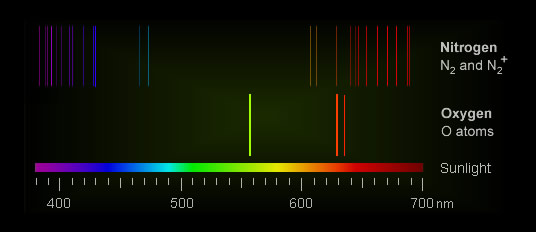Some people reportedly get depressed from that, especially further north than where I am, in Austin, Texas, where they might get only a few hours of light a day for months. Of course if we all had spectacular shows in the night skies like the ones captured above a few months ago in Tromos, Norway, I doubt anyone would mind long dark nights!
What you’re seeing there is an unusual combo phenomenon.
Fast moving aurora which are not the norm, most northern light displays are more stately, and the combination of diatomic oxygen and nitrogen combined with oxides, each emitting light at its own special set of frequencies and coming together to make rich pink and mauve along with the more traditional colors. Looking up into that, live and in person, the size of it, the almost frightening three dimensional grandeur that would dwarf anything on Earth, with no way to explain it, helps us understand one reason why earlier generations grappled with the notion of supernatural beings at work.
Lastly, I’ll be blegging all week for Christmas/Holidays contribs for one very poor and at times miserable blogger, i.e., me. Any amount no matter how small is greatly appreciated. Blogs don’t pay what they used to, even with decent traffic, and they never paid much to start with.



Leave a Reply
You must be logged in to post a comment.